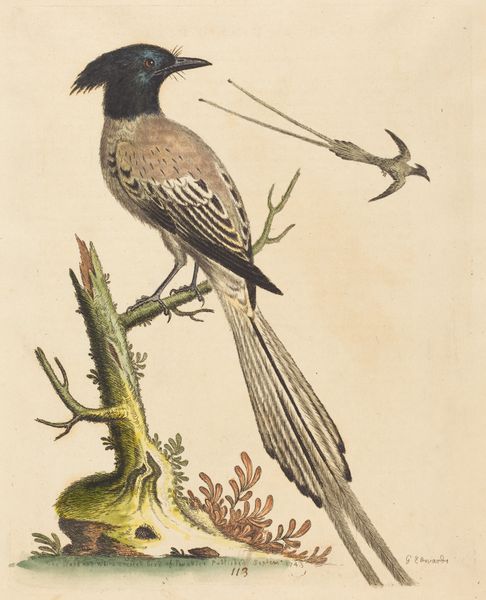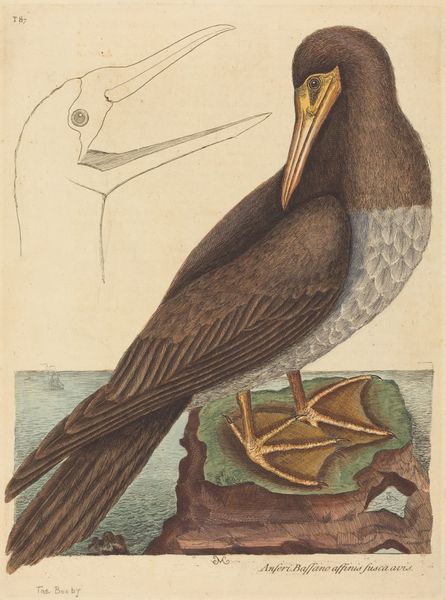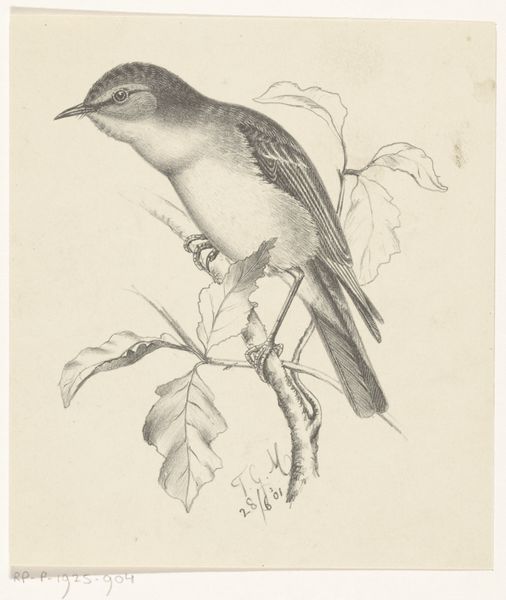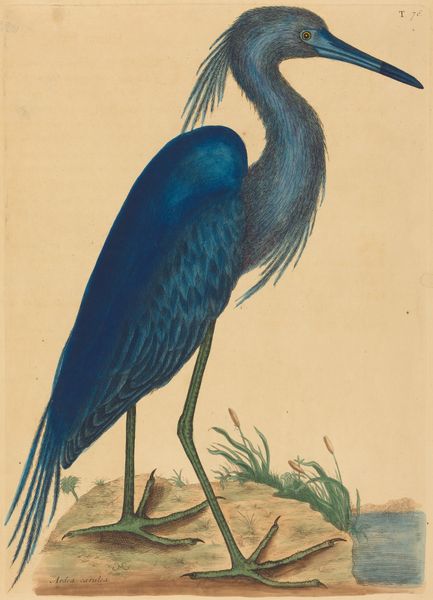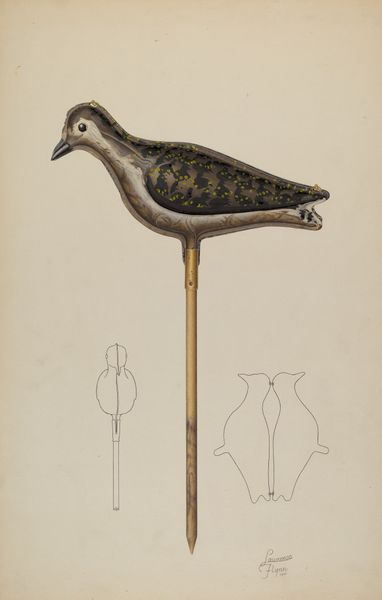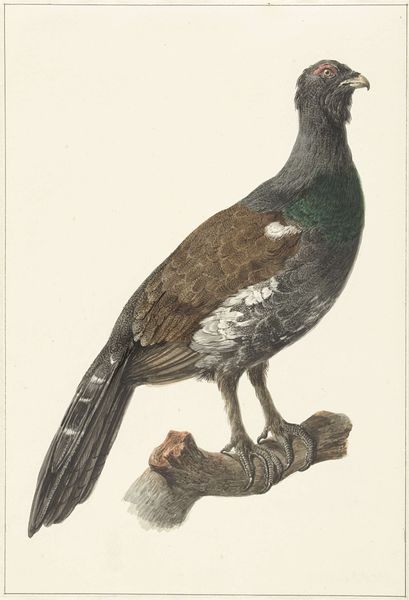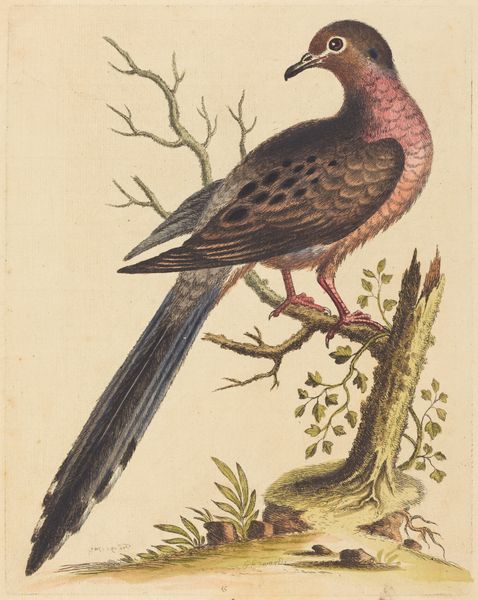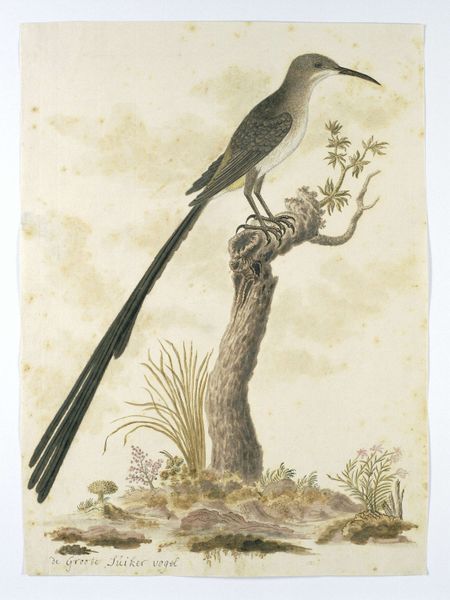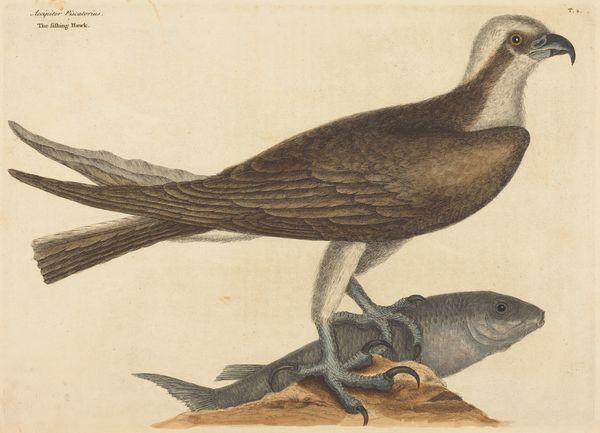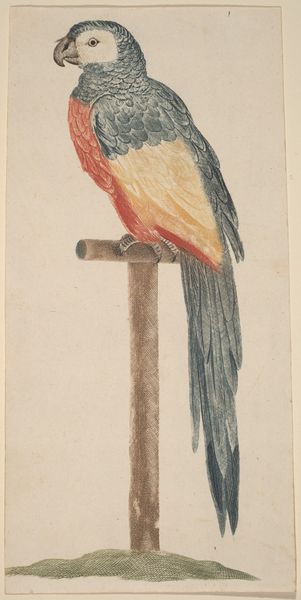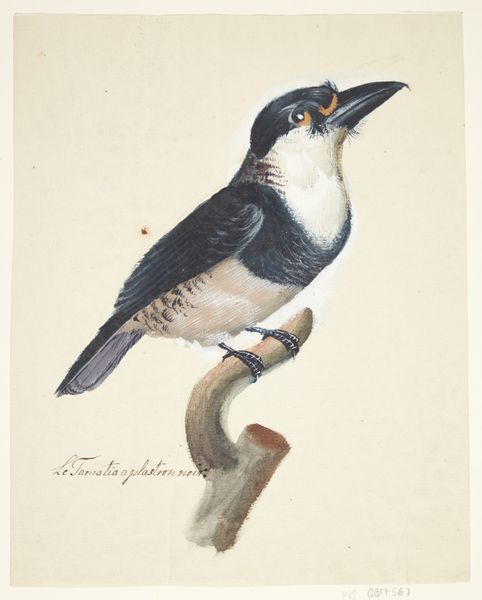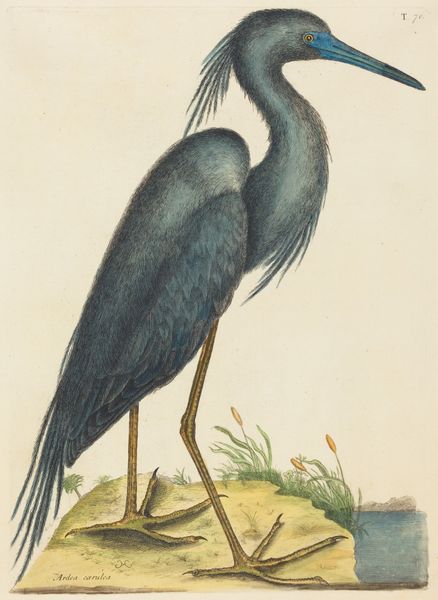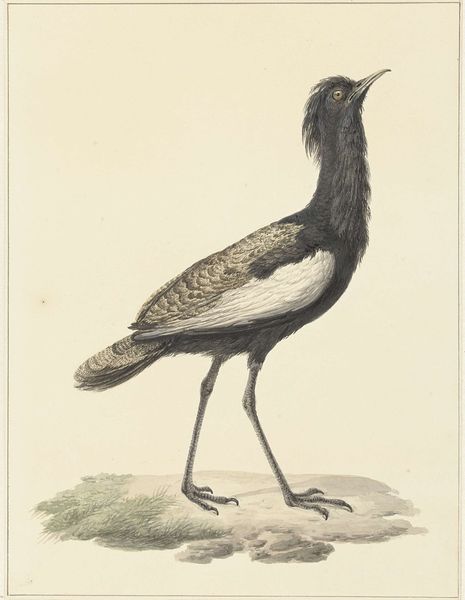
drawing, coloured-pencil, print, watercolor
#
portrait
#
drawing
#
coloured-pencil
# print
#
watercolor
#
pencil drawing
#
coloured pencil
#
15_18th-century
#
watercolour illustration
#
naturalism
#
watercolor
Dimensions: plate: 37.9 x 26.4 cm (14 15/16 x 10 3/8 in.) sheet: 43.5 x 30.8 cm (17 1/8 x 12 1/8 in.)
Copyright: National Gallery of Art: CC0 1.0
Editor: Here we have Mark Catesby's "The Swallow Tail Hawk," likely from 1754, rendered in watercolor and colored pencil. It's striking how the hawk fills the frame, almost confronting the viewer. What stands out to you when you look at this? Curator: Immediately, I see the representation of power coupled with vulnerability. Birds, historically, often represent freedom and aspiration. Hawks, in particular, signify strength and keen vision, but this one is perched, still. Note also how its eye is presented. The orange/red coloration could relate to anger or violence, while its relative small size gives the impression of timidity. The "swallow tail" is particularly striking, since it alludes to migration and adaptation. How do you interpret that tension between the hawk’s inherent predatory nature and this static portrayal? Editor: That's fascinating. I hadn’t considered the implied tension. It does feel almost frozen, caught mid-thought. Perhaps it suggests a moment of reflection, a pause before action? Curator: Precisely! Think about what Catesby, as a naturalist documenting the New World, was trying to capture. Was it merely the bird’s physical likeness? Or something more profound about the relationship between humanity and the natural world, perhaps evoking both awe and the potential for disruption? Does the focused detail signal the bird's importance? Editor: It does feel symbolic now that you mention it, like he wanted the viewer to really study it and consider its place in the world. Curator: Think about what the hawk is *not* doing - it's not soaring or hunting. It *is* perched with watchful eyes. Its visual power signifies to a viewer that continuity of nature and attention to symbols are vital. How does contemplating these details change your initial impression of the artwork? Editor: It’s given me a deeper appreciation for the layers of meaning that can be embedded in what seems like a straightforward depiction of nature. Thanks so much. Curator: A pleasure. Now, whenever you see an image of a bird, consider what its symbolic association might be.
Comments
No comments
Be the first to comment and join the conversation on the ultimate creative platform.
